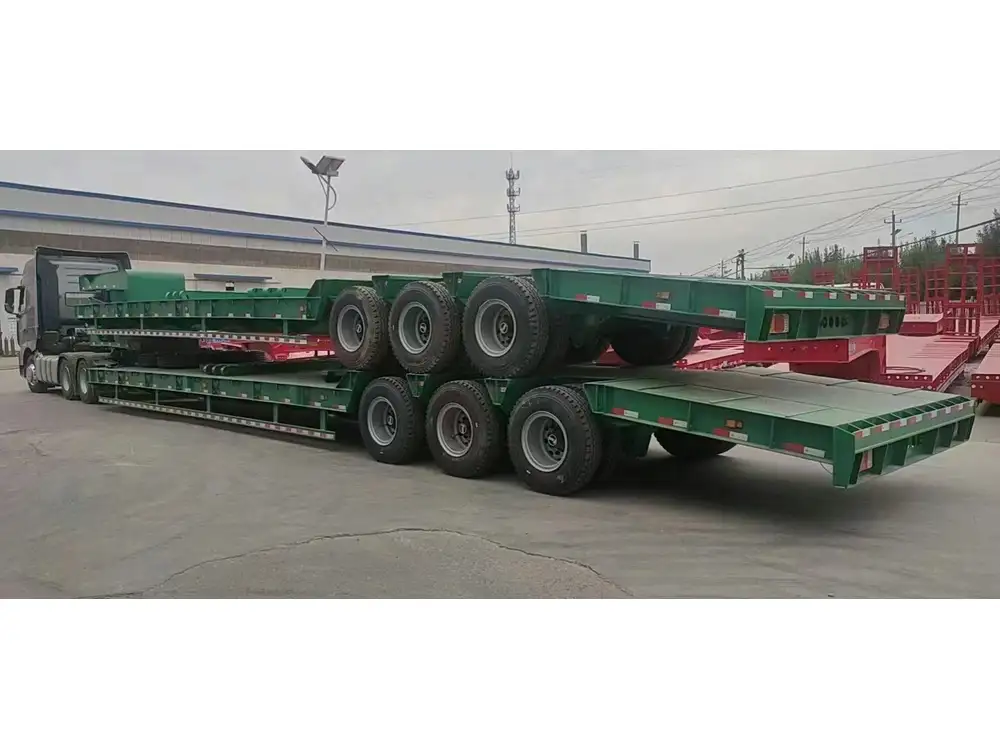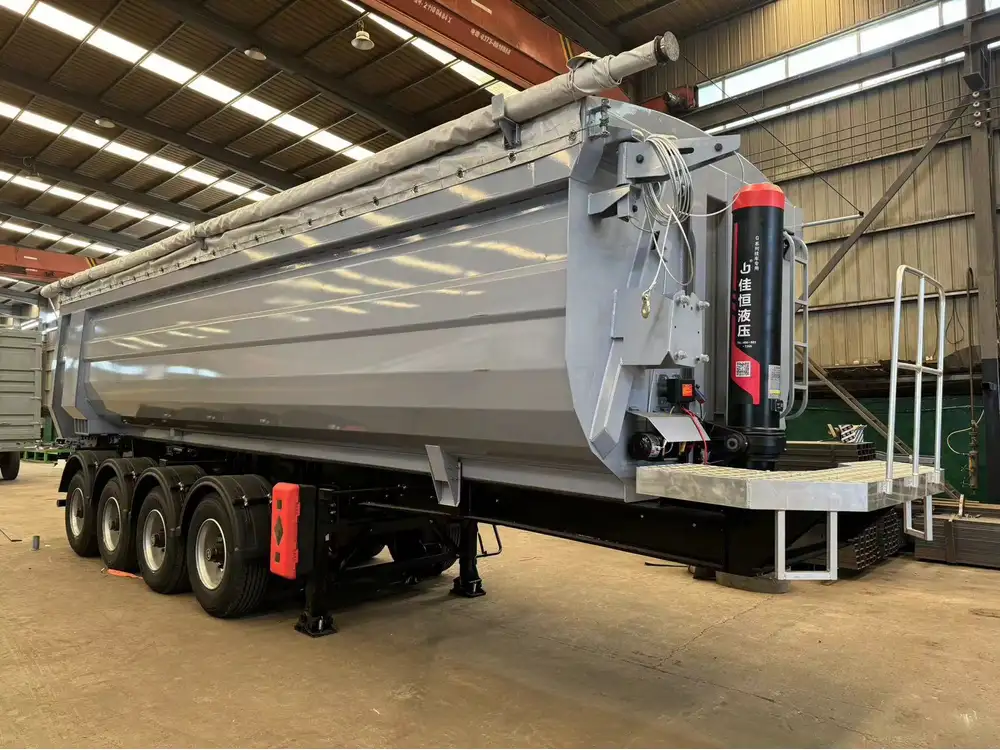Transporting livestock efficiently and humanely is a critical concern for farmers and transport companies alike. Among various forms of transportation, semi-trailers are often used due to their capacity, adaptability, and efficiency. However, the question of how many hogs fit in a semi-trailer is central to optimizing transport logistics and ensuring the welfare of the animals. In this article, we delve into the various factors that influence the capacity of a semi-trailer, while also offering insights that can facilitate decision-making in the transport of hogs.
Understanding Semi-Trailer Specifications
Dimensions and Capacity
To answer the question of how many hogs can fit in a semi-trailer, we first need to consider the dimensions of typical trailers. Most standard semi-trailers measure about 53 feet in length, 8.5 feet in width, and 13.5 feet in height. However, livestock trailers come in various configurations which may include:
| Trailer Type | Length (ft) | Width (ft) | Height (ft) | Capacity (lbs) |
|---|---|---|---|---|
| Standard Livestock | 48-53 | 8.5 | 13.5 | 38,000-45,000 |
| Gooseneck Trailers | 20-30 | 6-8 | 6-7 | 10,000-14,000 |

Weight Restrictions
Federal regulations limit the maximum weight a semi-trailer can legally transport, which typically caps out around 80,000 pounds, including the weight of the tractor. Therefore, understanding the weight of the hogs being transported, along with additional factors such as feed, bedding, and water, is crucial.
Average Weight of Hogs
The average weight of hogs varies greatly depending on their age and breed. Here’s a breakdown of typical weights:
| Hog Age / Type | Average Weight (lbs) |
|---|---|
| Piglet (up to 4 weeks) | 10-15 |
| Weaner (6-8 weeks) | 30-60 |
| Finisher (up to market) | 250-300 |
| Breeding Sow | 350-450 |
| Boar (male) | 500-800 |
Calculating Livestock Capacity
Given the data on the weight of pigs and the specifications of a semi-trailer, one can calculate the number of hogs that can be transported effectively:
- Estimate the Average Weight: For example, assume an average weight of 250 pounds for finisher hogs.
- Determine Payload Capacity: Subtract the weight of the trailer (typically around 15,000 pounds) from the legal limit of 80,000 pounds. This gives a payload capacity of 65,000 pounds.
Calculate Number of Hogs:
[ \text{Number of Hogs} = \frac{\text{Payload Capacity}}{\text{Average Weight of Hog}} = \frac{65,000 \text{ lbs}}{250 \text{ lbs}}\approx 260 \text{ hogs} ]
Thus, approximately 250-260 hogs can be transported in a standard semi-trailer under typical conditions.

Design Considerations for Hog Welfare
Space Requirements
Aside from mere numbers, ensuring the welfare of hogs during transport is paramount. The American Veterinary Medical Association (AVMA) guidelines suggest a minimum space allowance of approximately 5 square feet per breeding hog and roughly 2.5 square feet for finisher hogs. Therefore, the interior layout and the total floor space of the trailer also influence the suitable number of hogs.
| Type of Hog | Minimum Space Requirement (sq ft/hog) |
|---|---|
| Breeding Sow | 5 |
| Finisher (250 lbs) | 2.5 |
For a 53-foot trailer with an 8.5-foot width, the floor space would be:
[ \text{Floor Area} = 53 \times 8.5 = 450.5 \text{ sq ft} ]Using this space calculation for breeding sows:
Max Breeding Sows: [ \text{Sows} = \frac{450.5}{5} \approx 90 \text{ sows} ]
Max Finishers: [ \text{Finishers} = \frac{450.5}{2.5} \approx 180 \text{ finishers} ]
Ventilation and Temperature Control
Proper ventilation is indispensable in maintaining the health of the livestock during transit. Inadequate airflow can lead to heat stress and respiratory issues. Therefore, effective design allowing for adequate ventilation is crucial, including considerations for:
- Adjustable vents
- Fans for hotter climates
- Insulated trailers

Regulatory and Legal Considerations
Understanding transport regulations is crucial for successful livestock logistics. Here are some of the main regulations to consider:
- Federal Motor Carrier Safety Administration (FMCSA): Sets hours of service regulations that directly affect loading and unloading times.
- Animal Welfare Act: Guidelines outline how livestock should be treated during transport, including space, comfort, and access to food and water.
- State Regulations: Each state may have specific laws affecting livestock transport, including local weight limits, permits, and fees.
Efficient Planning for Transport
Pre-Transport Considerations
- Route Planning: Ensure the route minimizes stress on the animals with attention to road conditions, travel times, and rest stops.
- Loading Techniques: Employ proper loading practices to minimize panic among animals, including using non-slip ramps and adequate personnel.

During Transport
- Monitoring Conditions: Utilize temperature and humidity control devices to assess conditions inside the trailer continuously.
- Rest and Feed Schemes: Scheduling adequate rest periods and access to food and water can be beneficial, especially on long hauls.
Conclusion
Determining how many hogs fit in a semi-trailer is not simply a matter of mathematical calculations. It encompasses various factors, including trailer specifications, average weights of hogs, welfare standards, and logistical considerations. By ensuring the trailer is designed to maximize animal welfare while adhering to regulations and optimizing transport efficiency, producers can successfully navigate the complexities of livestock transportation.
For livestock transporters, understanding these variables not only streamlines the process but also contributes positively to the health and well-being of the animals involved. Emphasizing both humane practices and operational efficiency fosters sustainable practices that adhere to modern agricultural standards. By investing time and resources into understanding these elements, transporting hogs becomes not only a practical exercise but also a commitment to fostering better animal husbandry practices.
In your planning and decision-making for hog transport, we invite you to delve deeper into these areas, ensuring that every aspect of your logistics is finely tuned to maximize efficiency while prioritizing animal welfare.



